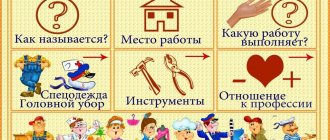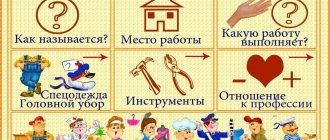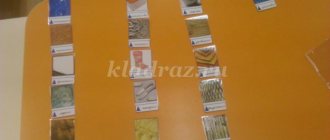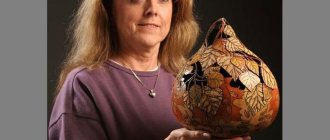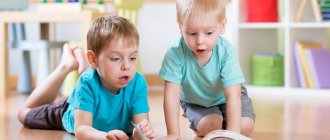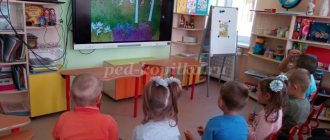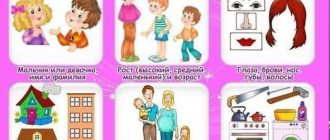Request a call
Speech apparatus
- this is the totality and interaction of human organs necessary for the production of speech. It consists of two sections: central and peripheral. The central section is the brain with its cortex, subcortical nodes, pathways and nuclei of the corresponding nerves. The peripheral department is the entire set of executive organs of speech, including bones, cartilage, muscles and ligaments, as well as peripheral sensory and motor nerves, with the help of which the work of these organs is controlled.
The peripheral speech apparatus consists of three main sections that act together.
1st department
- respiratory organs, since all speech sounds are formed only during exhalation. These are the lungs, bronchi, trachea, diaphragm, intercostal muscles. The lungs rest on the diaphragm, an elastic muscle that, when relaxed, is dome-shaped. When the diaphragm and intercostal muscles contract, the volume of the chest increases and inhalation occurs; when they relax, exhalation occurs;
2nd department
— passive speech organs are immobile organs that serve as a fulcrum for active organs. These are teeth, alveoli, hard palate, pharynx, nasal cavity, larynx. They have the greatest influence on speech technique;
3rd department
- active speech organs are mobile organs that perform the main work necessary for the formation of sound. These include the tongue, lips, soft palate, small uvula, epiglottis, vocal cords. The vocal cords are two small bundles of muscles attached to the cartilage of the larynx and located almost horizontally across it. They are elastic, can be relaxed and tense, and can be moved apart to different widths;
The first section of the peripheral speech apparatus serves to supply a stream of air, the second - to form the voice, the third is a resonator, giving the sound strength and color and thus forming the characteristic sounds of our speech, which arise as a result of the activity of individual active parts of the articulatory apparatus. The latter include the lower jaw, tongue, lips and soft palate.
The lower jaw moves down and up; the soft palate rises and falls, thus closing and opening the passage into the nasal cavity; the tongue and lips can take a wide variety of positions. A change in the position of the speech organs entails the formation of gates and constrictions in various parts of the articulatory apparatus, due to which one or another character of the sound is determined.
The tongue is rich in muscles, making it very mobile: it can lengthen and shorten, become narrow and wide, flat and curved.
The soft palate, or velum, ending in a small uvula, lies at the top of the oral cavity and is a continuation of the hard palate, starting at the upper teeth with alveoli. The velum palatine has the ability to move down and up and thus separate the pharynx from the nasopharynx. When pronouncing all sounds except m and n, the velum palatine is raised. If for some reason the velum is inactive and is not raised, then the sound is nasal (nasal), since when the velum is lowered, sound waves pass primarily through the nasal cavity.
The lower jaw, due to its mobility, is a very important organ of the articulatory (sound-pronunciation) apparatus, as it contributes to the full development of stressed vowel sounds (a, o, u, e, i, s).
The painful state of individual parts of the articulatory apparatus is reflected in the correct resonance and clarity of pronounced sounds. Therefore, in order to develop the necessary articulation, all organs involved in the formation of speech sounds must work correctly and in concert.
The organs of speech are shown in the following figure:
1 - hard palate; 2 - alveoli; 3 - upper lip; 4 - upper teeth; 5 - lower lip; 6 - lower teeth; 7 - front part of the tongue; 8 - middle part of the tongue; 9 - back of the tongue; 10 - root of tongue; 11 - vocal cords; 12 - soft palate; 13 - tongue; 14 - larynx; 15 - trachea.
Familiarizing children with the main organs of the articulatory apparatus
(conducted as a whole lesson)
Subject. Acquaintance with the organs of the articulatory apparatus and their basic movements.
Target. Introduce children to the main organs of the articulatory apparatus: mouth, lips, teeth, tongue, palate and the basic movements of the tongue (raise the tongue up, lower down, direct to the corners of the mouth).
Short description
The teacher, addressing the children, asks: “What are we talking about? (“With your mouth.”) That’s right, with your mouth. How do we remove food from a spoon? (“Lips.”) What does the cat use to lap up the milk? (“Tongue.”) So listen to the tale of the Cheerful Tongue.
Once upon a time there was a Merry Tongue, He had a house. The house was very interesting. What kind of house is this? This is the mouth. That's what an interesting house Merry Tongue had. To prevent Merry Tongue from running out, his house was always closed. How is the house closed? Lips. But besides one door, this house has a second door. (Smiles and shows his teeth to the children.) What is the name of this door? (“Teeth.”) But in order to see the second door, you need to learn how to open the first door correctly. (Smiles, showing upper and lower front teeth.)
One day Merry Tongue wanted to look at the sun and breathe some fresh air. First, the first door opened (he opens his lips and invites the children to do the same), and then the second. And the tongue stuck out, but not all of it, just the tip. Tongue appeared and hid - it was cold outside, summer had passed.
In the house of the Merry Tongue there is a bed where he sleeps. (Draws the children’s attention to how calmly the tongue lies.) Until we wake him up, let the Tongue sleep. Let's close the second door first, and then the first.
Our Tongue is very cheerful, he loves to have fun and jump. Yes, jump so much that you reach the ceiling and click. (Draws the children’s attention that the ceiling is the palate. Asks them to stroke the palate with their tongue.)
The next day, Tongue decided to check again whether it had become warmer. When all the doors were open, Tongue looked out, looked left, right, up, down and, feeling that it had become colder, went into his house. First one door closed, and then the second. That’s the whole fairy tale about the Merry Tongue.”
The teacher asks the children to show how the doors of the house opened and closed, how Tongue slept, how he looked left, right, up, down.
Methodical instructions. During class, pay attention to each child, check how he performs the exercises.
Development of speech breathing
Subject. Development of long-term targeted oral exhalation.
Target. Achieve the ability to direct the air stream in the middle of the tongue.
Previous work. The children practiced long oral exhalation.
Preparatory work. The teacher prepares glass vials (according to the number of children) approximately 7 cm high, with a neck diameter of 1-1.5 cm, and attaches stickers with the children’s names to them.
The game “Whose steamer hums better?”
Short description
Each child is given a clean bottle. The teacher says: “Children, listen to how my bubble buzzes if I blow into it. (It hums.) It hummed like a steamship. How will Misha’s steamer hum?” The teacher addresses each child in turn, and then invites everyone to hum together.
Methodical instructions. To buzz into a bottle, you need to slightly stick out the tip of your tongue so that it touches the edge of the neck. The bubble touches the chin. The stream of air should be long and go in the middle of the tongue. If the beep does not sound, it means that the child does not comply with one of these requirements. Each child can only blow for a few seconds to avoid dizziness.
Sound and.
Description of correct articulation
lips in a smile;
the teeth are close together, but not closed, the front teeth are exposed;
the tip of the tongue rests on the lower incisors. The lateral edges of the tongue touch the upper molars. The front part of the back of the tongue is raised to the hard palate, the back part of the back is lowered;
the soft palate is raised and pressed against the back wall of the pharynx so that the passage into the nasal cavity is closed; the air stream goes through the mouth;
the vocal cords are tense, brought together and vibrate, resulting in the formation of the voice (see illustration on the back flyleaf).
Stage I of work
(conducted as part of the lesson)
Subject. Preparation of the articulatory apparatus for correct pronunciation of sounds and.
Target. To develop in children the ability to smile effortlessly, showing the upper and lower front teeth.
Previous work. Children have already been introduced to the fact that their lips can open and close their teeth, that they can stretch forward like a tube.
Preparatory work. Consider an explanation for those children who smile tensely or without showing their teeth. (This game is best played before telling a fairy tale.)
Game “Who can smile?”
Short description
Children sit in a semicircle. The teacher says: “When we are happy, we smile. Like this. (Shows how to smile.) When we smile well, we show our teeth. Smile, children." The children smile, the teacher makes sure that everyone’s teeth are visible, then asks: “Children, do you want Parsley to come visit us? (“Yes.”) Are you happy with him?” (“Happy.”)
The teacher shows Petrushka and asks: “Smile at him.” The children are smiling. Then he hides Parsley: “Children, Parsley hid, and you hide your teeth, cover them with your lips. And when he appears again, smile at him again. Now hide your teeth, cover them with your lips, sit quietly and listen to the story.”
Methodical instructions. The game is repeated 3-4 times. The teacher makes sure that the children smile naturally, without tension, showing their teeth. (In order for the teacher to get a good smile when showing, he silently pronounces the sound and.)
Stage II of work
(conducted as part of the lesson)
Subject. Clarification of sound pronunciation and development of speech breathing.
Target. Achieve prolonged pronunciation of the sound and on one exhalation.
Previous work. Children learned to smile, exposing their upper and lower teeth, which is necessary for the correct pronunciation of the sound and.
Preparatory work. Consider what instructions to give to children if they reproduce the sound incorrectly; What type of work can this game be combined with in class?
Game "Horses"
Short description
Children, pretending to be horses, stand in the stable (a corner of the room fenced off with chairs). The teacher says: “The morning has come, all the horses are going for a walk.” Children walk around the room one after another, raising their legs high, like horses. At the signal “horses, go home,” the children say: “iii...” and quickly run one after another to the stable.
Methodical instructions. During the game, the teacher makes sure that the children pronounce the sound for a long time.
III stage of work
(conducted as a whole lesson)
Subject. Education of clear pronunciation of sounds and words, development of phonemic hearing.
Target. Exercise children in clear pronunciation of sounds and words, teach them to pronounce them for a longer time.
Previous work. Children were taught to clearly pronounce the isolated sound i.
Preparatory work. Select objects or pictures that have a sound in their names, for example: bear, fork, plum, cherries, pyramid, skates, boots, eagle owl, bird, book, stockings, etc. It is necessary to select words that are understandable to children of this age and with emphasis on the sound i. The number of objects or pictures must correspond to the number of children.
Game "Show and name"
Short description
The teacher shows the children a beautiful box with objects, toys or pictures whose names contain the sound and. He takes out the first object himself and, showing it, names it clearly and loudly. Then the children take turns taking out objects and, showing everyone, name them loudly. The names of individual items can be repeated all together.
Methodical instructions. When naming an object, the teacher uses his voice to highlight the sound and, fixing the children’s attention on it. We must ensure that children also emphasize the sound a little and pronounce it a little longer than other sounds.
